Our last morning in London started with another extended Uber drive to our final practice visit in this city of cities. At the end of our car journey, for a time that would typically take a Brisbanite to get to the Gold Coast, we arrived five miles later at the relaxed and workshop-like Studio Octopi.
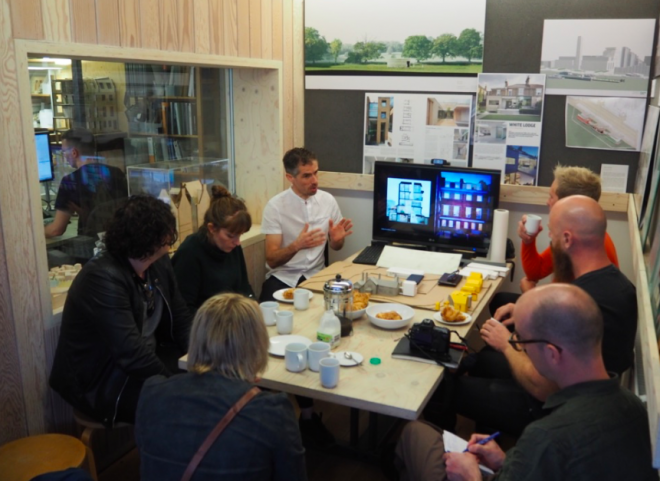
Clichés of the importance of journeys over the importance of destinations come to mind when reflecting on our travels through London, mostly because it has felt particularly pertinent in these past four days of the time spent with Jason, Joseph, Kim, Leah, Katelin, Joshua, Mai, Alison, and Helen. Travelling with these individuals while moving between one provocative and stimulating practice visit to the next, the times in the car have been intense moments of reflection, criticism, laughter, sharing of personal experiences, and the unexpected development of quick-sprung friendships across the whole of the group.
In one such liminal car journey, we each reflected on the range of practices that we had visited, the physical nature of the offices, how each practice chose to present itself, and the apparent methods of the practice. Carmody Groarke’s office in the refurbished storage warehouse-cum-architect-studio, reflected the opportunistic manner in which the practice produces thoughtful designs. In each project it seemed that the particulars of the building being developed, and the qualities of the site, came together to give the project its trajectory towards a unique building. Historical analyses of sites, consideration for how the desired experience of people using the facilities may influence the program, and the contextual relevance of proposed materials and forms, were familiar to our group but seemingly estranged concepts to most but not all of the London practices that we visited.
Housed in a multi-storey brown-brick factory building, perhaps originally used for the manufacture of affordable clothing in the early twentieth century, we met with the office of Zaha Hadid Architects’. Driven by data inputs and rationalisations of how residential buildings may be deconstructed and put back together again, the still speculative but coming to a city near you soon building designs the practice offers up Uber and other similar sharing-economy models to property developers. While the physical nature of this work-house may have contrasted sharply with the large-curvaceous buildings that are synonymous with the brand, there may be a consistency with other European luxury brands that have gone global in the past twenty years.
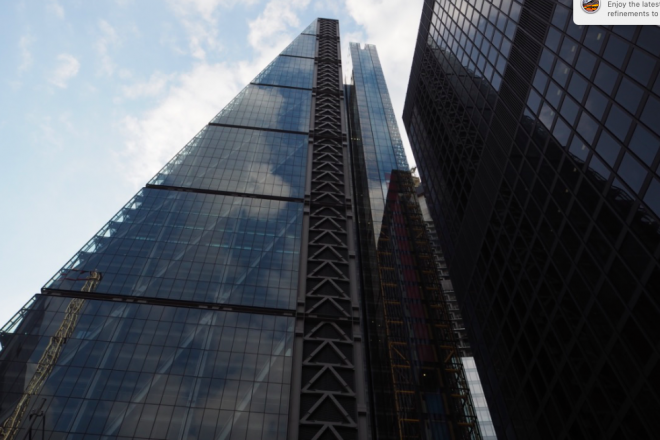
Located within their own design of the Leadenhall Building or “cheesegrater” (completed in 2014), with the influence of the city literally pushing up against the office like some kind of positive panoptican, Rogers Stirk Harbour and Partners (RSH+P) is practising in what they have preached. Standing in the plaza at the base of the ‘Grater, a contemporary edition to the city’s rich history of private interests offering up public spaces, we were able to observe the Lloyds of London building (also designed by RSH+P). Although completed almost 40 years apart, seeing these two buildings standing side-by-side, I cannot help but think that in the near future people will confuse which building came first. Confident in its own position, without fan-fare, services and workings all exposed (in a way that isn’t dissimilar to the refineries that I would guess funded it), the Lloyd’s of London building still feels progressive leaving the ‘Grater to feel mannered and retro.
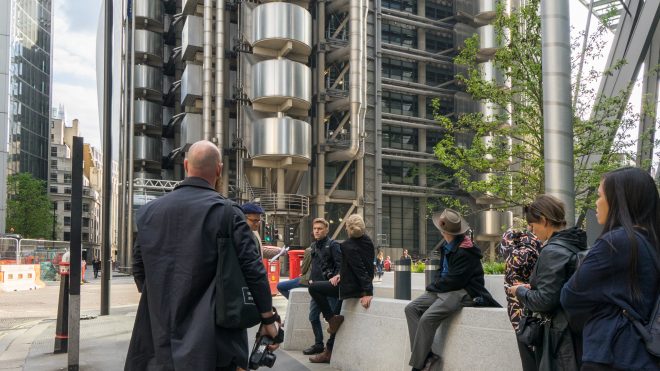
AL_A drew our group to the hard working area of London’s inner-north N7 area-code. Working our way around fork-lifts and the rattle of passing lorries we stepped off the oil-stained footpath, leaving our shoes behind, and onto the bright red (Dulux paint colour match yet to be confirmed) carpet of the largest of the refurbished workrooms. By describing how they test the performance of materials, how these are then put together, and who has the knowledge and training to test the propositions, the practice presented itself as a workshop for research and development of façade systems for their clever building propositions. Working, training, testing, making, each of the refurbished areas of the AL_A office was more like a refresh of finishes to the operations/warehouse building than a complete reworking of functions that is typical when a professional office occupies a light-industrial building.
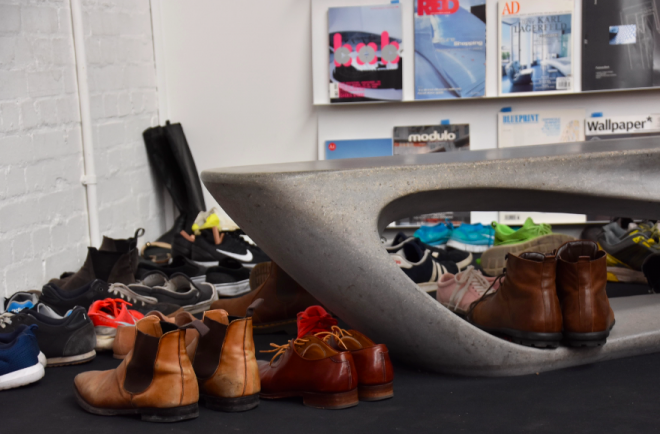
Coming to the mews where Ash Sakula Architects have accommodated its office in the lower level of their family home, there was a warmth and eccentricity you might expect from visiting your best-friend’s parents. Quirky yet sitting comfortably as a whole, it seemed that every element of the office had a unique story to tell, even the kitchen sink.
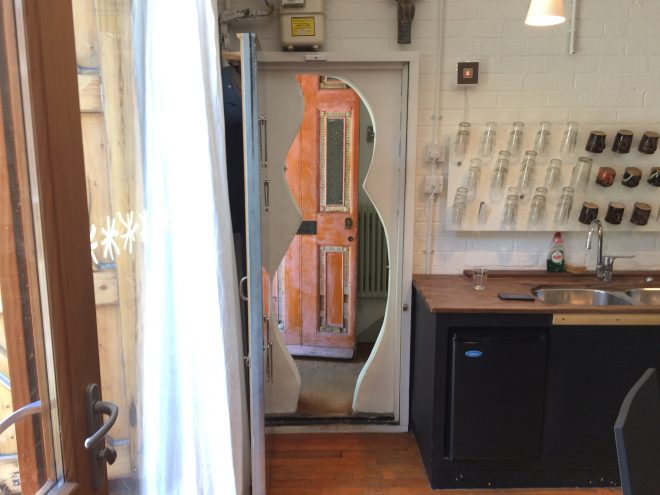
In a street of garages converted into workshops, the start-up appearance of Studio Octopi reinforced the up and coming nature of this practice even though they are working on one of the most historically significant memorials in Britain. The Runnymede Project, commissioned to celebrate the 800th anniversary of the sealing of the Magna Carta, is the work of artist Mark Wallinger who invited Studio Octopi to collaborate on the memorial in Surrey. Sensible and poetic, the collaboration will represent the best of what can be generated when artists and architects collaborate to complete conceptually rich built work.
From the office of Studio Octopi, on our way to Heathrow airport, there was another opportunity for us to reflect upon the practices that we had visited in London and for me to consider my own emerging practice. The business models that we encountered, the nature of workspaces, commentary on style, process, and client types, were all rich reference points to consider how we, as architects choose to work in different ways.
Now in Berlin we finished the day sitting together again, this time having swapped our seven-seater Uber Volkswagen for nine comfy armchairs, eating our Japanese-German fusion with wines and cocktails, enjoying what has only been the first leg of a very unique and stimulating journey.
– Dirk Yates
Follow #2018DuluxStudyTour for more updates.